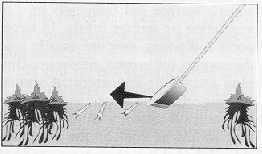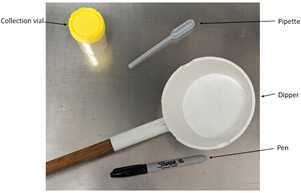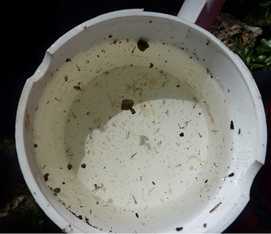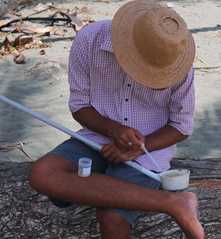Standard Operating Procedure for conducting larval and pupal surveys for Anopheles
Tanya L L Russell, Kyran Staunton, Thomas R Burkot
Disclaimer
This Standard Operating Procedure may be used for training and reference purposes. Users are responsible for ensuring any edits to this document are produced and approved in accordance with all relevant legal and ethical requirements governing the surveillance operation.
Abstract
This SOP describes the materials and methods to perform larval surveys of anopheline mosquitoes.
Description: Larval sampling involves capturing immature mosquitoes from aquatic habitats.
Target species and physiological states: Captures larvae and/or pupae of many species.
Entomological surveillance indicators: Larval sampling is used for the full range of immature vector indices, and in addition, larvae can be reared and used as specimens for insecticide resistance bioassays.
Advantage: The equipment and supplies and inexpensive and portable.
Disadvantage: Larval sampling is a poor indicator of adult production. This method it is labour intensive to use and requires trained staff as it can be difficult identify larvae to species. Experience is important as the more samples a person does, the better at larval surveys one becomes. Cryptic habitats are easily missed.
Data: Total number of larvae and pupae per aquatic habitat or dipping effort. Larvae can be recorded by early or late instars. Alternatively, presence or absence at each site can be recorded. When necessary, field data is merged with the results of subsequent laboratory analyses.
Attachments
Steps
Once a potential habitat has been identified:
- Proceed slowly and step lightly to not vibrate the water or disturb the vegetation more than is necessary.
- Approach the water facing the sun to avoid casting a shadow on the water.
- If there is a strong wind, dipping should be done on the windward side of the habitat where larvae and pupae will be most heavily concentrated.
- Look for larvae and pupae before beginning to dip.

Scoop the larvae into the dipper head.
- There are several different methods of how to use the dipper, but an effective method for Anopheles larvae is to skim the dipper head (angled at 45 degrees and submerged about 3 cm in the water) in a straight line towards the larvae.
- The number of dips is often standardised by taking 10 from each sampling station.
- Wait at least 2 minutes between each dip to allow larvae to resurface.

To transport larvae, they can be stored in some of the water from the habitat. During transport, keep them cool and consider using a cooler box to protect them.
Larvae can be killed with hot water from a kettle or by putting into a vial with >70% ethanol. The samples of larvae and pupae can be stored in 70% ethanol for an extended period. Be sure not to dilute the ethanol below 70% as the mosquito may decompose and not be identifiable or useful for further analyses.
Clearly label all sample vials.
Additional notes
If the water is muddy, you should transfer the water in the dipper to a flat white tray to make it easier to see any larvae.* In very small habitats, you may need to use the Turkey baster (gravy needle) to transfer water from the habitat to the dipper or white tray to better see any larvae.
- Large habitats should be sampled in multiple locations within the habitat to get a better estimate of the density of larvae across the entire habitat.
- It’s easy to be confident of positive sampling, it’s much harder to be confident of negative sampling.
- Newly emerged 1st instar larvae are very hard to see – but might still be there in large numbers.
- Take the GPS coordinates of the larval habitat or create a mud map to allow later surveys to measure changes in the larval numbers.
- If possible, avoid dipping for mosquitoes while raining.




